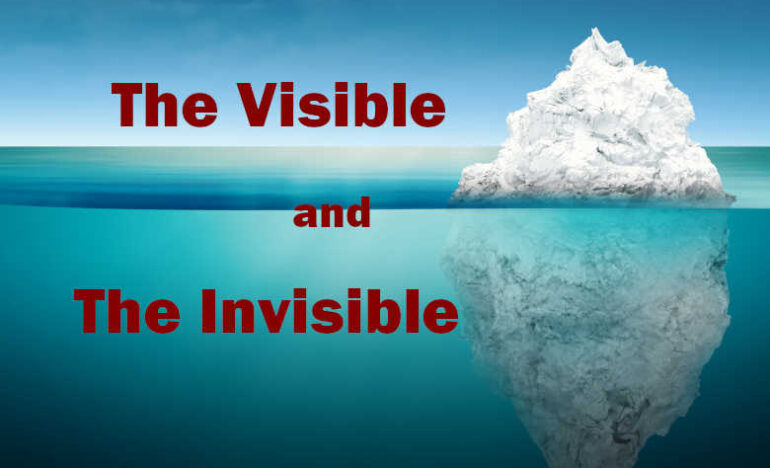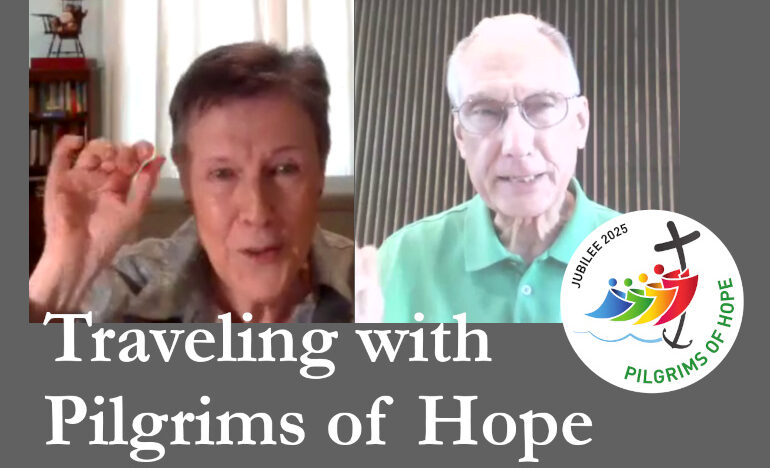The Visible and Invisible: The Two-Fold Work for Transformation

First Pillar of Islam: Muhammad is the Messenger of God, Part Five
By Kathy Keary
Part 13. The full series is here: The Contemplative Spirit of Islam.
In Muhammad’s mystical vision known as the Night Journey, he was carried horizontally on a divine winged steed from Mecca to Jerusalem where the Angel Gabriel joined him. They ascended vertically through the seven levels of heaven. (Learn More about the Night Journey in last week article.)
Orthodox Muslims believe the Night Journey truly happened, while many other Muslims believe that this was a mystical vision, not an actual happening. Either way the story holds significant insight about the visible and invisible worlds that speak to the two-fold work that is required to attain inner transformation: horizontal and vertical or working in the visible and invisible realms.
Working in the visible world requires a heightened awareness of the events in our everyday lives as we deal with others. We ponder our relationships and interactions gleaning insight for the sake of personal growth. We work in the invisible world when we engage in life-giving practices that nourish our wellbeing such as silence, meditation, prayer, nature, music, sunsets, laughter and any activity that connects us to the boundless mystery of which we are a part (Fragrance, 118).
Jamal Rahman points out that the things that make us truly human are invisible. Our desire for beauty, truth, justice, and love are rooted in our souls, not our bodies. Even though our soul is invisible, it makes itself known by its longings for these invisible traits (Gems, 147).
Like what your reading? Never miss an article published on the Renewal Center website: Sign up to receive our newsletters.
Spiritual growth requires efforts in both realms. The spiritual seeker aspires to know God amid their day-to-day existence. While engaged in the world, the Sufi keeps their inner attention planted on the Divine. They strive to be “in the world but not of the world.” In his book, Sufism: The Transformation of the Heart, Llewellyn Vaughan-Lee beautifully describes this way of being in the world:
Sufis are known as “slaves of the One and servants of the many.” Belonging to God, they work in the world bringing light and love in the marketplace of ordinary life…. Integrating the inner and outer life, Sufis enable the light of the beyond to flow into everyday life, serving the Creator in the midst of His creation.
The 10th century Persian Sufi Abû Sa’id characterized this spirituality in the following way: (Vaughan-Lee, 118).
The true mystic goes in and out amongst the people
and eats and sleep with them
and buys and sells in the market and marries
and takes part in social intercourse,
and never forgets God for a single moment.
In his book, The Knowing Heart: A Sufi Path of Transformation, Kabir Helminski explains that we are suspended between the outer world and the mystery of our inner world. He describes human beings as standing on the threshold between these two worlds. Those who have ventured into the inner world are aware of the beauty and power it holds. He concludes that a person’s development is incomplete without an awareness of this mystery (Helminski, 69).
Rahman provides an exercise that brings the invisible world to the rescue in interpersonal conflict. Prayer, meditation, and silence create a sense of inner peace that will assure that our dealings with the other person are grounded in love and compassion.
Prior to confronting an individual with whom you are upset, talk frankly to that person’s soul freely sharing your thoughts and emotions This practice creates a positive shift in the person who may not need to confront the other in the visible world as they have experienced a resolution of their prior anxiety. Those who do engage with the other person find that the experience was more pleasant than anticipated. This technique is also helpful if the other person is no longer available perhaps because of death or estrangement (Gems, 148).
Typically, the invisible world remains invisible; however, through the ages, inhabitants of that realm have come to the aid of individuals in need. At the time of the Night Journey, Muhammad was in great need for assurance from God. In his mercy, Allah sent the Angel Gabriel to escort him on his voyage to heaven (Out of Darkness, 87).
Many people experience the Divine Presence in a palpable way. Others do not. Preoccupation with the details of our lives with little work in the invisible realm leads to an inability to sense the still, small voice within. Opening one’s heart through prayer, meditation, and silence is key to truly embracing the reality that God walks with us and communicates with us in a way that can be heard with the ear of our heart. We refer you to our series on contemplative prayer that is written from a Christian perspective but shares similarities with the Muslim view.
Next week our focus will turn to the Second Pillar of Islam: Prayer. Stay Tuned.
References
Helminski, Kabir. The Knowing Heart: A Sufi Path of Transformation. Boston, Massachusetts: Shambhala Publications, Inc, 1999.
Rahman, Jamal. Spiritual Gems of Islam: Insights and Practices from the Qur’an, Hadith, Rumi and Muslin Teaching Stories to Enlighten the Heart and Mind. USA: Skylight Path Publishing, 2013.
Rahman, Jamal; Elias, Kathleen Schmitt; and Redding, Ann Holmes. Out of Darkness Into Light: Spiritual Guidance in the Quran with Reflections from Christian and Jewish Sources. Harrisburg, New York: Morehouse Publishing, 2009.
Rahman, Jamal. The Fragrance of Faith: The Enlightened Heart of Islam. Bath, England: The Book Foundation, 2004.
Vaughan-Lee, Llewellyn. Sufism: The Transformation of the Heart. Point Reyes, California: The Golden Sufi Center, 1995.
[Kathy Keary, a Precious Blood Companion and spiritual director, holds a master’s degree in theological studies and is a graduate of the Atchison Benedictine’s Sophia Center’s Souljourners Program, an intense study of spirituality and spiritual direction. Kathy believes that the divine is present and active in all of life and encourages others to be awakened to the God in all including the divine within. She enjoys accompanying others on their journey to wholeness discovering the person they were created to be.]
We’d Like to Hear From You!
We’d like to know what you think about this article. Send us a comment using the form below. Do you have a suggestion? Is there something you want to learn more about? Send us a note.
Related

Pilgrims of Hope, Episode 6: Walking with Cancer Survivors
Hosted by Fr. Ron Will, C.PP.S.
We are talking with people who find hope amid difficult circumstances or bring hope to others. In this episode, Kathy Keary talks about how centering prayer, journaling and other spiritual practices helped her cope with two life threatening health issues.

The Rollercoaster Torture
An Assembling God’s Puzzle video
By Fr. Garry Richmeier, C.PP.S.
Life is full of ups and downs, like a roller coaster, and that fact is a piece of life’s puzzle that we must deal with. Depending on how we deal with it, it can be torture, or it can be simply another difficult aspect of life to be navigated. How do we avoid the torture?
Categories
Assembling God's Puzzle Coffee with Padre Cooking & Spirituality Encounters of the 4th Kind Family Matters Reflections on the Eucharsitic Prayers Spiritual Resources Taize Prayers The Contemplative Life Traveling with Pilgrims of Hope Uncategorized Videos Week of Prayer for Uhristian Unity When you need a little help
